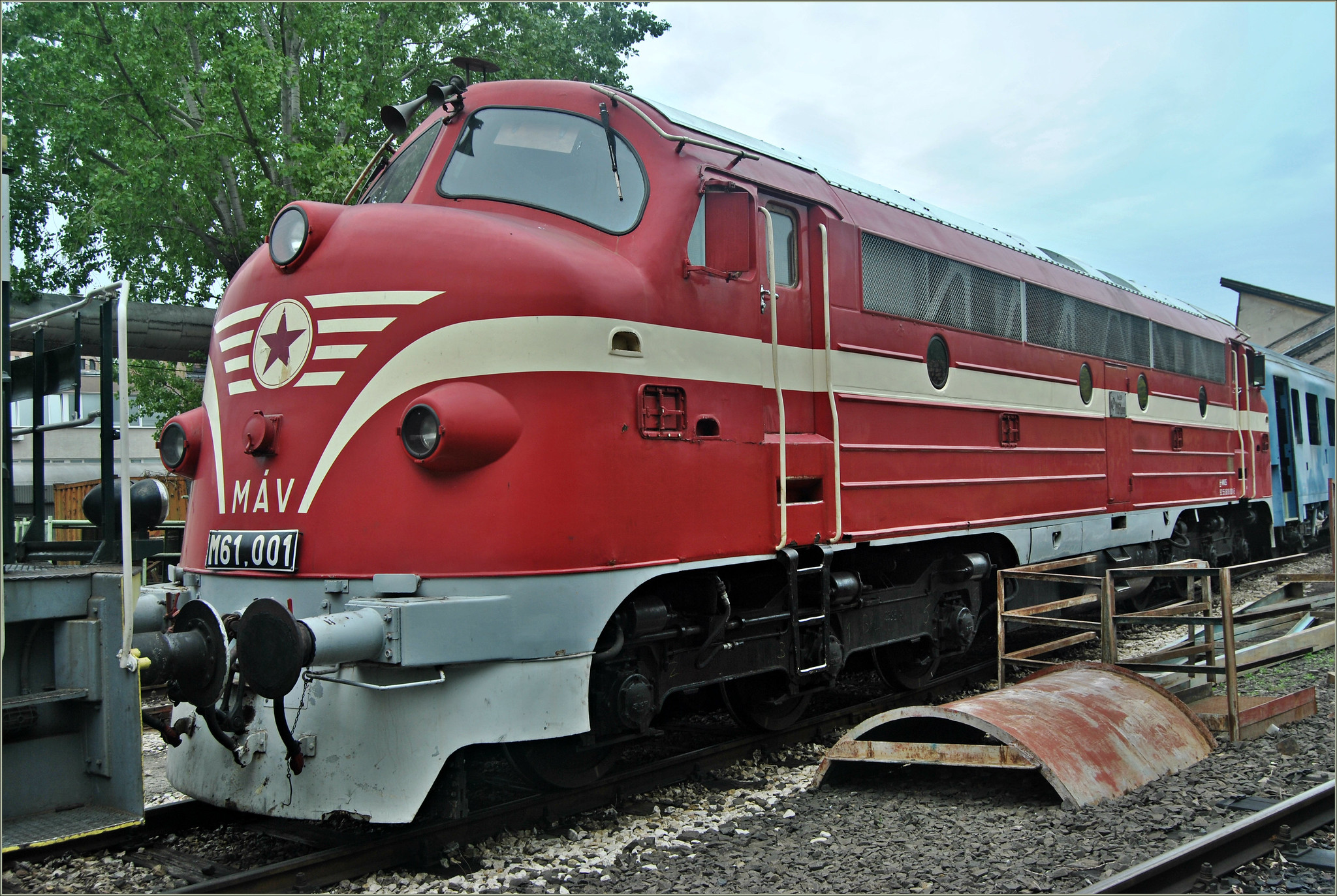If you’ve been to Balatonalmádi-Öreghegy, you might have spotted Locomotive 375 680 parked on an old bridge, commemorating not only the type of engine but also the former No.11 Alsóörs-Veszprém railway line. The so-called Azure Express was built in 1909 along a 22-kilometre stretch. The line was created to speed up freight and passenger traffic between Veszprém and Balaton. By doing so, it also enabled the lake to be more easily accessed from the north-western part of Hungary.
The route started near today’s Balaton Plaza mall in Veszprém, leaving the city and running through Meggyespuszta, then through Szentkirályszabadja to Balatonalmádi and Öreghegy. A cycle path now runs along the track. From here, steam engines clattered along to Alsóörs via Káptalanfüred. The line was closed in 1969, for economic reasons. The track was demolished permanently in 1974, but many items remain from the old railway, such as the turntable at Alsóörs or the building of the former Veszprém railway station. The history of the railway line can be read in detail on this Hungarian-only memorial page.
Since 1994, the good old 375 has been garnering the admiration of steam enthusiasts at the corner of Töltés utca and Budai Nagy Antal utca, atop the bridge. Meanwhile, over at Balatonalmádi station, another locomotive can be observed, the 275 108. This type was one of the most common locomotives in sidings, with its sub-varieties running for half a century. The engine took the coal and water it needed to operate along with it, without needing a separate carriage.

The steam locomotive 275 series, track number 040, nicknamed Nyalóka (‘Lollipop’) stood for many years in the courtyard holiday camp for railway workers at Balatonboglár. When the hostel’s lease expired, the landmark locomotive had to move. According to the terms of a previous contract, Balatonszemes Council undertook to transport and renovate the 36-tonne machine and to place it in the park outside the local train station. The Army even pitched in when it came to moving the train in March 2017, a speeded-up video making the job look far easier than it actually was.
Between 1928 and 1940, Budapest’s MÁVAG factory produced 148 examples of the legendary Lollipops. This type was mainly used in sidings to carry passenger and freight trains. The 275s even reached speeds of up to 70kph while towing.
The Lollipop you can see at Balatonszemes was made in 1929, with production number of 5022. Its last home station was Bátaszék, after being decommissioned in 1990, it was moved to the former Lokomotiv Hotel. Until 2042, ie for 25 years from its transfer, it will definitely be staying in Balatonszemes.
The locomotive at Tapolca is the Nohab Négyeske (‘Four’), which left for Budapest on 4 June 1999 but didn’t even make it as far as Badacsony. It suffered a fatal accident at Badacsonylábdihegy after running into a tree felled by a hurricane-force storm at a speed of 78kmh. Fortunately, crash derailed two carriages derailed but no-one was injured – miraculously, there were no passengers on board.
As reported in Indóház Magazin:
“Seeing the tree in time was made impossible by the hail and the bend immediately just before that section of track. The locomotive rose into the air, then landed on its side onto the track, making a turn of about 120 degrees when the bogies came off. Two carriages also swung off, flipped and crossed over... the driver, Tamás Szűcs, survived the accident with only minor scratches. One of the ticket inspectors travelling in the first carriage also suffered minor bruises. But the main frame of the locomotive was so bent from falling on the track that it could not be repaired.”
Négyeske (officially M61-004) was considered a celebrity among diesel locomotives, in 1993, on the 125th anniversary of Hungarian State Rail MÁV, and the 30th anniversary of Hungary’s first Nohabs, the locomotive “was honoured to get back its cherry-red colour from the orange it was painted after first coming out of the factory,” was how Indóház Magazin wrote about “Her Majesty”. In addition to towing trains from Szombathely to Kaposvár and Tapolca to Budapest, it excelled in many locomotive events across Hungary.
After the accident in 1999, the locomotive was transferred to the railway collection of Budapest’s Museum of Transport. Its intact nose was cut off and functioned as an outdoor exhibit until 2015, when the Nohab torso was returned to its home, Tapolca station, when the museum closed.
The Budapest museum and Albert Wass Library & Museum in Tapolca later agreed to have the revered locomotive on display at Balaton as a loan. The Négyeske has since been seen at the foot of the station's former water house, and was renovated in 2017. The celebration of Nohab’s 20th birthday in 2019 didn’t quite work out due to a dispute between drivers – but that’s another story.




